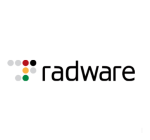I use AWS WAF to protect web applications and web traffic. It handles application input and throughput - typical web application firewall tasks.
We integrate AWS WAF with several platforms within cloud hosting and other security solutions and provisions in our business. Regarding AI, it's been around for about 20 years, so it's not new. It's just a new buzzword. I've been in security for 30 years and remember using AI when I started 25-30 years ago. We have multiple forms of AI within our business.
We're considering replacing it shortly, so I've looked at alternatives like Aqua and others.
I'd like to see improvements in its usability and functionality. I'm also concerned about being too dependent on the cloud provider's WAF version. For security, using multiple vendors and not putting all our eggs in one basket is better.
The functionality I'd like to see improved is mainly around the applications and cloud integration elements.
I have been working with the product for three years.
We haven't encountered any stability issues.
The solution is scalable and my company has 30,000 users.
The solution's support is quite good and fair.
I see several pros and cons when I compare AWS WAF to other WAF products. The main advantages are that the AWS Firewall functionality integrates well, it's easy to deploy and select, and the implementation is straightforward. The integration with AWS is also very good. However, the main drawback is that while it works well in the AWS environment, it doesn't necessarily work as well for other cloud or on-premise setups.
The initial setup of the AWS WAF solution always has complexities, regardless of which solution you choose. Our organization is multi-tenant, multi-hosted, multi-cloud, multi-located, and international, so we always face challenges during implementation. No matter how good the product is, there will always be challenges.
For implementation, we usually follow a TOGAF model for project planning. Sometimes, we use a waterfall approach, but we stick to TOGAF mostly. Some parts of the business use Agile, but I don't typically use Agile for WAFs.
From a maintenance perspective, AWS WAF isn't any more difficult to maintain than other solutions. I've had experience with nearly all the WAFs out there, and they're all pretty much the same in terms of maintenance, regardless of the service provider.
I rate the overall solution a six out of ten.


















